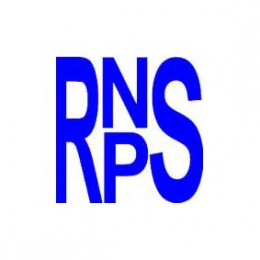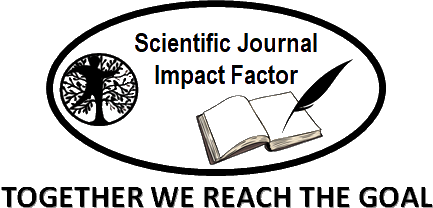Complications of cerebrovascular diseases at the Manuel Ascunce University Hospital in 2017
Keywords:
ICTUS, ENFERMEDAD CEREBROVASCULAR/ complicacionesAbstract
Background: cerebrovascular disease, also known as cerebrovascular accident or stroke, represents 90 % of neurological diseases and is the third leading cause of death in most developed countries.
Objective: to describe the behavior of the complications of cerebrovascular diseases.
Methods: an observational, descriptive, cross-sectional study was carried out with a population of 198 patients and a sample of 99, which was determined through a simple random probabilistic sampling.
Results: the predominant age group with 41.5 % was 76 years or more. In the female sex, they presented with an incidence of 62.7 %. The toxic habits presented with great relation with the appearance of these diseases showing the consumption of coffee with 59.9 %, the cigar with 26.9 % and the alcohol with 13.2 %. Cerebrovascular diseases of the ischemic type predominated in frequency over those of the hemorrhagic type with 75.8 %. The complications of these diseases varied according to the nature of the same. Mortality manifested in 27.3 % of cases.
Conclusions: the cerebrovascular diseases of ischemic type appear with a frequency considerably superior to the hemorrhagic one. The main complications of cerebrovascular diseases were pressure ulcer, pneumonia, cerebral edema and hydrocephalus. Most cases of cerebrovascular diseases reach resolution based on exclusive medical treatment.
DeCS: STROKE/drug therapy; STROKE/complications; STROKE/epidemiology; STROKE/mortality; CROSS-SECTIONAL STUDIES.
Downloads
References
1. Bardaj Fandos T. Revisión actualizada sobre enfermedad cerebrovascular. Nursing [Internet]. 2003 [citado 08 Jul 2019]; 21(3): [aprox. 13 p.]. Disponible en https://kundoc.com/pdf-revision-actualizada-sobre-enfermedad-cerebrovascular-estudio-de-un-caso.html
2. Chamorro Sánchez A. Accidentes vasculares cerebrales. En: Farreras Valentí P, editores. Medicina Interna. 17a ed. Madrid: Elsevier; 2012. p.1334-1346.
3. Smith WS, Jhonston C, Hemplhill JC. Enfermedades cerebrovasculares. Harrison. Principios de la medicina interna. En: Kasper, Fauci, Hauser, Longo, Jameson, Loscalzo, editors. 19na ed. Vol. 2 New York: Ed McGraw Hill Education. 2015. p. 2559-2586.
4. Noya Chaveco ME, Moya González NL. Roca Goderich. Temas de Medicina Interna. Enfermedades cerebrovasculares. 5ta ed. Vol. 2. La Habana: Ed Ciencias Médicas; 2017. p. 367-389.
5. García Hernández JA, Celestrin Marcos S. Enfermedades cerebrovaculares. En: Vicente Piña E, editore. Manual de diagnóstico y tratamiento en especialidades clínicas. La Habana: Ed Ciencias Médicas; 2016. p.549-562.
6. Pérez Villares JM. La Enfermedad cerebrovascular en las unidades de cuidados intensivos de Andalucía. Características epidemiológicas y calidad de vida al año del episodio. [Tesis maestría] Granada: Universidad de Granada. Facultad de Ciencias médicas; 2016.
7. Rodríguez García PL, Alonso de Leciñana M, Díez Tejedor E, Frank A, Barreiro P. Guía para el manejo del paciente con enfermedad vascular cerebral aguda. Rev Neurol 2015; 23(1):363-9.
8. Alonso G. Complicaciones del Ictus Isquémico. Rev Neurolo 2016;29(1):3-21.
9. Arboix A, Álvarez-Sabin J, Soler L. Ictus. Clasificación y criterios diagnósticos. Rev Neurolo 1998;13(1):3-21.
10. Bederson JB, Sander CE, Hunt BH, Dacey RG, Dion JE, Diringer MN, et al. Guidelines for the management of aneurysmal subarachnoid hemorrhage: A statement for healthcare professionals from a special writing group of the Stroke Council, American Heart Association. Stroke [Internet]. 2009 [citado 08 Jul 2019]; 40(3): [aprox. 32 p.]. https://www.ahajournals.org/doi/pdf/10.1161/STROKEAHA.108.191395
11. Chest Heart&Stroke Scotland Types of stroke[Internet]. 2019 [citado 19 Ene 2019]. Disponible en: http://www.chss.org.uk/.
12. Clinical Knowledge Summaries. Stroke and TIA. [Internet]. [citado 19 Dic 2017].Disponible en:http://www.cks.nhs.uk/
13. Medscape Medicine. Stroke, Ischemic [Internet]. eMedicine.com; ©1994-2019 [citado 19 Dic 2017]. Disponible en:http://www.emedicine.medscape.com/.
14. Nieuwkamp DJ, Setz LE, Algra A, Linn FH, de Rooij NK, Rinkel GJ. Changes in case fatality of aneurysmal subarachnoid haemorrhage over time, according to age, sex, and region: a meta–analysis. Lancet Neurol. 2009;8:635–42.
15. Rabinstein AA, Lanzino G, EF Wijdicks. Multidisciplinary management and emerging therapeutic strategies in aneurysmal subarachnoid haemorrhage. Lancet Neurol. 2010;9(5):504–19.
16. Ramírez Moreno JM. Conceptos básicos en las enfermedades cerebrovasculares. [Internet]. Badajoz: Hospital Universitario Infanta Cristina; 2016 [citado 19 Dic 2017]. Disponible en: https://slideplayer.es/slide/10336509/.












